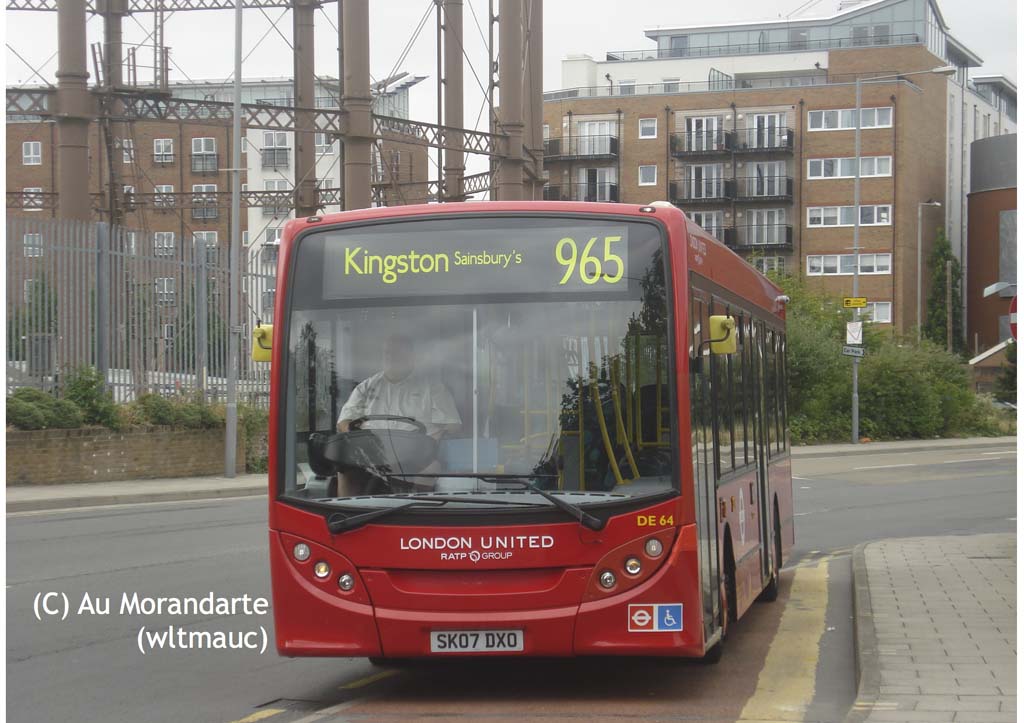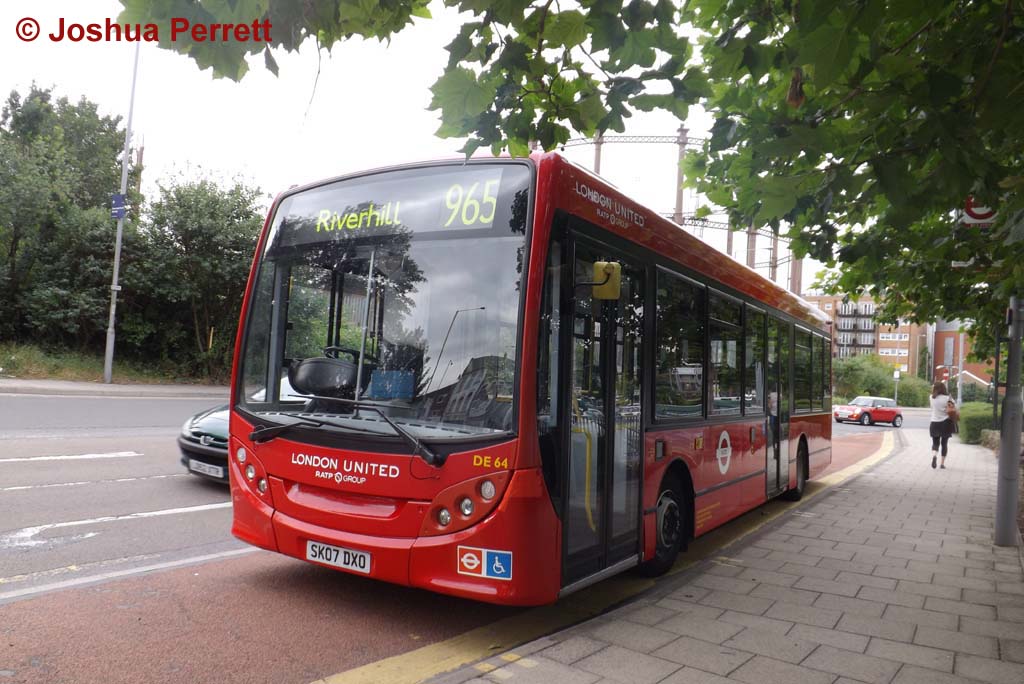 | Photo © Au Moran. |
Home | Bus routes | Operational details | Service changes | Operators & Garages | Photo gallery
Little now remains of the once extensive network of "Mobility Bus" routes. These started out in the 1980s to provide an "accessible" service for wheelchair users, and used adapted Leyland Nationals with wheelchair lifts in the centre doorway. Later, minibuses were used, and at one point there were around 100 routes operating, numbered between 851 and 999. Generally they provided one or two journeys per week, meandering for miles around housing estates before reaching some supermarket or town centre and returning a few hours later, although a few routes provided a more intensive operation.
The advent of low floor buses on the regular bus network made many of these routes superfluous, and as routes were converted to low floor operation parallel Mobility routes were withdrawn or scaled back. Now that full low floor operation has been achieved, the Mobility (or, to use the more politically correct term, 900-series) network has reached maturity, with the remaining routes serving areas not covered by the main network, and in many cases serving roads that are not suited to regular bus operation. The focus is thus switched from carrying wheelchairs to providing a service for those who are generally less mobile – indeed, wheelchairs are not often carried now, and the current buses can only carry one each anyway, so this is just as well!
These routes had been covered on dedicated contracts, latterly with two buses (one from Metroline and one from Metrobus) doing different routes of each day of the week, but the scattered nature of the network made this very inefficient. For instance, Metrobus ran a route in North East London from their garage in Orpington, entailing around 50 empty miles per day via the Dartford Tunnel! TfL deferred re-tendering the routes, but after they had been pared back as far as was possible they were put out for tender on an individual basis, with revised timetables designed so that they could be run using buses spare from other routes between the peaks. (Most routes use more buses during peak hours than at other times, owing to higher traffic levels and consequent extended journey times. Buses are also available off a number of school day only routes.)
The 965 was awarded to Transdev London United, whose Tolworth garage the route passes. The original intention was to use the DPS class Dart from route 665, but this proved too large for part of the route, which was instead inaugurated using a short Dart spare from route K1. Transdev operation began on 2 June 2008, at which time the K1 used DPK class MPDs, but a few weeks later these were replaced by new Enviro200Darts. Running number 329 on the K1 was spare between the peaks and could thus cover the 965, though it was driven by the driver from route 665 during school terms.
However, London United lost route K1 from June 2013 so the route had to be converted to work with a DPS off the 665 after all, as no short buses were available. The running number accordingly changed to TV492. Oddly, however, I have received two updates for the route, and both are of the same bus, DE64 (SK07 DXO), and both on the same day (Friday 12 July 2013), at the same location at the Kingston terminus in Sury Basin! The Sainsbury's is to the right of this picture, built on the old gasworks site; note the old gasholder still in situ.
 | Photo © Au Moran. |
 | Photo © Joshua Perrett. |
The 965 is also unique now in that it runs outside the Greater London area, and is therefore registered with the traffic commissioners. It starts in Riverhill, a mobile home park, which is in London, but the only access is via Worcester Park Road, which is in Surrey. It is at this junction that the length problem was encountered, and it takes quite a bit of skill even to get a short Dart round without reversing, but, with only three regular drivers, they should get used to it! The Surrey boundary follows Hogsmill River, the the 965 runs along the south side of this from the Riverhill exit to Tolworth Court before re-entering London. Technically the route is available for use along here, but it is unlikely that anyone would do so.
After passing through Tolworth, the route follows King Charles Road. A regular service was proposed for this road at one time by diverting route 406, but the scheme fell through. King Charles Road is narrow with high levels of car parking, which would make it difficult for buses to pass. It is not too far from the parallel Ewell Road, which the 406 still uses, but there are a number of residential care homes along the road, so the 965 provides a worthwhile service. Buses then proceed via Villiers Avenue, before turning along Portland Road, the final unique stretch of road, where there is a further care home. Finally buses reach Kingston, where they run to a new terminus at Kingston Sainsbury's in Sury Basin. An excellent bus stand was put in here when the store opened a few years ago, but remained unused until the 965 was extended when the current contract started. Even then, it is a pity that such a good stand is only used twice a week, and the bus returns to the garage in between journeys in any case!
The 965 runs on Mondays and Fridays, including bank holidays (other than Christmas). Traditionally the mobility routes did not run on bank holidays, but Kingston Market runs on a Monday, and does not shut down at bank holidays. The other mobility routes all run on different days now; those that run on a Friday do operate on Good Friday, when the main network is running a Saturday (rather than Sunday) service.
A few years ago TfL had noted that the number of passengers on the 965 each week could all be accommodated on one bus and therefore proposed to reduce it to operate on one day per week. What they had evidently not realised was that the majority of the passengers on a Friday were actually the same people as on a Monday – the bus is like a lifeline for them as it is the only way they can get out of their homes. The proposal was duly seen off.
Just recently, at the time of writing, TfL proposed to withdraw the route completely, with Dial-a-Ride cited as an alternative, but a strong campaign seems to have succeeded in staving off the threat for now. One presumes that the objections all came from Riverhill, as it is now proposed to omit King Charles Road and Portland Road leaving them unserved once again, with buses running direct from Tolworth to Kingston via the 406 routeing – though the benefit of doing this is unclear, and the saving minuscule.
Navigation
| Previous | Next | |
| Chronologically | 77 | 13 |
| Numerically | 931 | A10 |
Photo Gallery | Bus route list | Operational details | Service changes | Operators & Garages